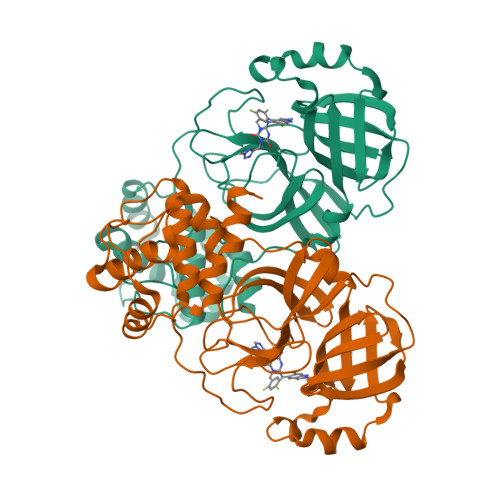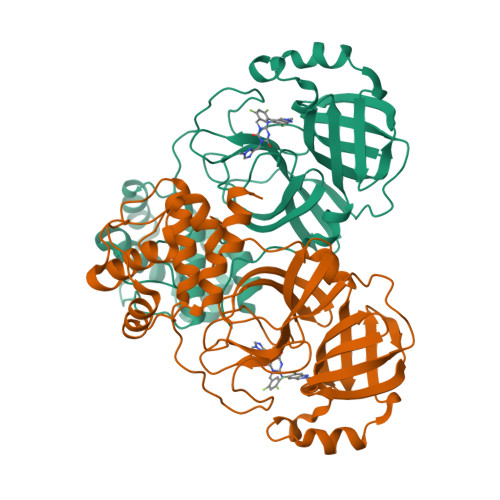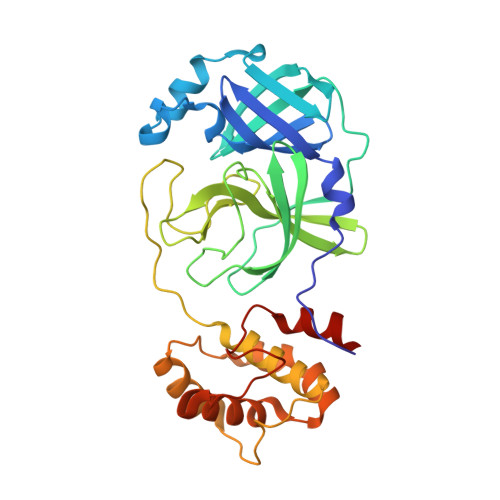Effects of SARS-CoV-2 Main Protease Mutations at Positions L50, E166, and L167 Rendering Resistance to Covalent and Noncovalent Inhibitors.
Kovalevsky, A., Aniana, A., Ghirlando, R., Coates, L., Drago, V.N., Wear, L., Gerlits, O., Nashed, N.T., Louis, J.M.(2024) J Med Chem 67: 18478-18490
- PubMed: 39370853
- DOI: https://doi.org/10.1021/acs.jmedchem.4c01781
- Primary Citation of Related Structures:
9CMJ, 9CMN, 9CMS, 9CMU - PubMed Abstract:
SARS-CoV-2 propagation under nirmatrelvir and ensitrelvir pressure selects for main protease (MPro) drug-resistant mutations E166V (DRM2), L50F/E166V (DRM3), E166A/L167F (DRM4), and L50F/E166A/L167F (DRM5). DRM2-DRM5 undergoes N-terminal autoprocessing to produce mature MPro with dimer dissociation constants ( K dimer ) 2-3 times larger than that of the wildtype. Co-selection of L50F restores catalytic activity of DRM2 and DRM4 from ∼10 to 30%, relative to that of the wild-type enzyme, without altering K dimer . Binding affinities and thermodynamic profiles that parallel the drug selection pressure, exhibiting significant decreases in affinity through entropy/enthalpy compensation, were compared with GC373. Reorganization of the active sites due to mutations observed in the inhibitor-free DRM3 and DRM4 structures as compared to MPro WT may account for the reduced binding affinities, although DRM2 and DRM3 complexes with ensitrelvir are almost identical to MPro WT -ensitrelvir. Chemical reactivity changes of the mutant active sites due to differences in electrostatic and protein dynamics effects likely contribute to losses in binding affinities.
Organizational Affiliation:
Neutron Scattering Division, Oak Ridge National Laboratory, 1 Bethel Valley Road, Oak Ridge, Tennessee 37831, United States.

















